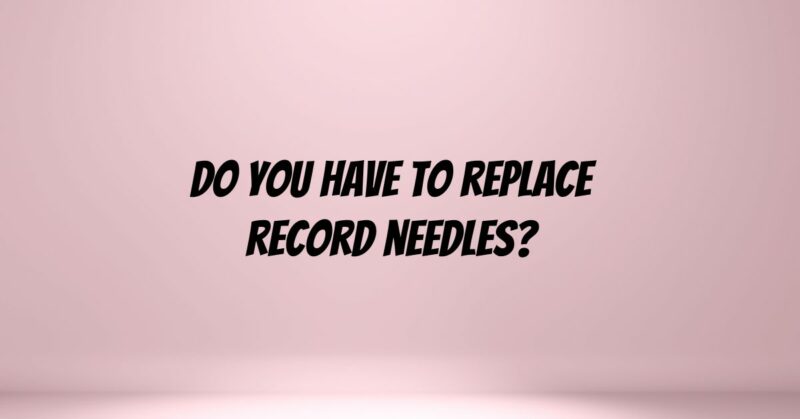Vinyl records have made a remarkable comeback in recent years, captivating both seasoned audiophiles and newcomers to the world of analog music. However, one aspect of vinyl playback that is often overlooked is the maintenance and replacement of the record needle, also known as the stylus. In this article, we’ll explore the importance of replacing record needles and provide guidance on when and how to do it to ensure the longevity of your records and the quality of your listening experience.
Understanding the Record Needle
The record needle, or stylus, is a small, delicate component of your turntable’s cartridge that makes direct contact with the grooves of your vinyl records. As the record spins, the stylus follows the contours of the grooves, translating the analog information engraved on the record into audible sound. Over time, the stylus can wear out due to friction, which can lead to a decline in sound quality and potential damage to your records.
Why Replace Record Needles?
- Sound Quality: The most immediate reason to replace a record needle is to maintain or enhance the sound quality of your vinyl playback. As the stylus wears down, it may no longer track the grooves accurately, resulting in distorted or muted sound, sibilance, or loss of detail.
- Record Preservation: A worn-out stylus can damage your precious vinyl records. When the stylus is no longer sharp and clean, it can create excessive wear on the grooves, leading to permanent damage and decreased playback quality.
- Tracking Force and Alignment: When a stylus is past its prime, it can become challenging to maintain the correct tracking force and cartridge alignment. These factors can affect both the stylus and your records. A worn stylus may not stay aligned correctly, potentially leading to mistracking, where the stylus skips or jumps on the record.
When to Replace a Record Needle
The lifespan of a record needle can vary depending on usage, maintenance, and the quality of the stylus. On average, a diamond-tipped stylus can last anywhere from 500 to 2,000 hours of playback. Here are some signs that it may be time to replace your record needle:
- Sound Degradation: If you notice a decline in sound quality, such as distortion, excessive surface noise, or a loss of high-frequency detail, it’s a strong indicator that your stylus needs replacement.
- Visual Inspection: Examine the stylus under a magnifying glass or microscope. Look for signs of wear, damage, or a flattened diamond tip. Any visible irregularities should prompt replacement.
- Increased Skipping or Mistracking: If your turntable begins to skip or mistrack more frequently, it may be due to a worn stylus that can’t maintain proper contact with the grooves.
How to Replace a Record Needle
Replacing a record needle is a straightforward process, but it’s essential to follow these steps carefully:
- Identify the Correct Replacement: Determine the exact stylus model that is compatible with your turntable’s cartridge. Refer to your turntable’s manual or contact the manufacturer for guidance.
- Power Off: Ensure your turntable is powered off and disconnected from the electrical source.
- Remove the Old Stylus: Gently remove the old stylus from the cartridge by following the manufacturer’s instructions.
- Install the New Stylus: Carefully align and attach the new stylus, following the manufacturer’s guidelines for proper alignment and installation.
- Calibration: After installing the new stylus, you may need to recalibrate your turntable’s tracking force and anti-skate settings to ensure optimal performance.
Conclusion
Replacing a record needle is a crucial aspect of turntable maintenance that should not be overlooked. Regularly monitoring the condition of your stylus, listening for changes in sound quality, and performing visual inspections can help you determine when it’s time for replacement. By replacing your stylus as needed, you’ll not only preserve the sound quality of your vinyl collection but also protect your records from potential damage, ensuring many hours of enjoyable and faithful analog music playback.


